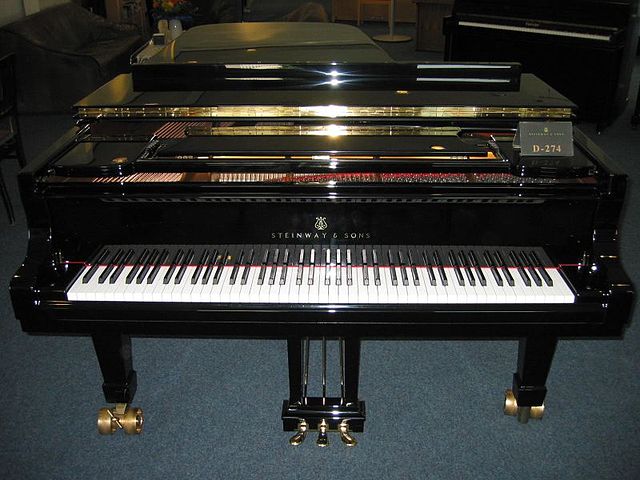A pedalboard is a keyboard played with the feet that is usually used to produce the low-pitched bass line of a piece of music. A pedalboard has long, narrow lever-style keys laid out in the same semitone scalar pattern as a manual keyboard, with longer keys for C, D, E, F, G, A, and B, and shorter, raised keys for C♯, D♯, F♯, G♯ and A♯. Training in pedal technique is part of standard organ pedagogy in church music and art music.
The 30-note pedalboard of a Rieger organ
This 1609 organ shows the short, button-style pedals of early pedal setups
This 1776 diagram depicts the setup of the manuals and pedal keyboard
AGO-spec.: concave/radiating
A musical keyboard is the set of adjacent depressible levers or keys on a musical instrument. Keyboards typically contain keys for playing the twelve notes of the Western musical scale, with a combination of larger, longer keys and smaller, shorter keys that repeats at the interval of an octave. Pressing a key on the keyboard makes the instrument produce sounds—either by mechanically striking a string or tine, plucking a string (harpsichord), causing air to flow through a pipe organ, striking a bell (carillon), or activating an electronic circuit. Since the most commonly encountered keyboard instrument is the piano, the keyboard layout is often referred to as the piano keyboard or simply piano keys.
The musical keyboard of a Steinway concert grand piano
The Korg Monologue synthesizer has 25 slim keys and an E-E range.
Keyboard of a Letter-Printing Telegraph Set built by Siemens & Halske in Saint Petersburg, Russia, ca. 1900







